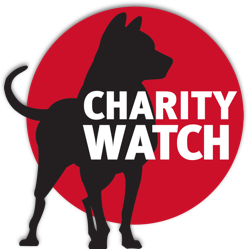 During the heat of fundraising for the Tsunami disaster the media frequently flashed efficiency ratios of charities. Unfortunately, in many cases the raw numbers from a charity's tax form were used to generate the ratings without any consideration of the source of income, the in kind gifts component or the results of audited financial information. AIP's letter grade ratings, which are based on our in-depth analysis, give donors a better understanding of how their donated dollars are being spent.
During the heat of fundraising for the Tsunami disaster the media frequently flashed efficiency ratios of charities. Unfortunately, in many cases the raw numbers from a charity's tax form were used to generate the ratings without any consideration of the source of income, the in kind gifts component or the results of audited financial information. AIP's letter grade ratings, which are based on our in-depth analysis, give donors a better understanding of how their donated dollars are being spent.
Stephanie Kurzina, Director of Resource Development at Oxfam-America, a highly regarded international relief and development organization, appeared on PBS last February to explain why Oxfam's efficiency rating does not compare as favorably with other charities as it should. She cited two major reasons: Oxfam doesn't accept government grants and it doesn't accept large quantities of donated goods such as medicines. She explained that these items are very large and come at no or lower fundraising cost. She gave an example of turning down a donation of $1 million worth of desalination equipment to provide drinking water to the Tsunami-struck Maldives. Oxfam instead spent $165,000 of donor contributions to buy lightweight desalination equipment that was easier to transport and operate by untrained people. She then said, "that wasn't the most efficient solution according to the rating guides, but it was, we believe, the most effective way to get the job done."
Ms. Kurzina must not have been referring to AIP's Charity Rating Guide because it is the only major national publication that excludes the value of donated goods in its ratings. Had Oxfam accepted the $1 million of inappropriate equipment, it would not have helped their rating, yet the purchase of the appropriate equipment will improve their rating. Also, in the calculation of fundraising efficiency, AIP's Guide, unlike the other charity guides, does not include the proceeds from government grants and contracts. Doing so makes charities that receive a large portion of their support from the government falsely appear to be efficiently raising money from the public. AIP strongly encourages donors to find out how much it costs a charity to obtain their contributions from the public. Throwing government funds and donated goods into the mix will distort this efficiency measurement.
The United States Fund for UNICEF, which is a nonprofit fundraising arm for this United Nations agency, does not receive government funds. Still it does not compare favorably to most other international aid groups in AIP's Guide because of how it spends its cash donations.
The Fund's website at www.unicefusa.org prominently features links to the websites of Charity Navigator and the Better Business Bureau's Wise Giving Alliance, agencies that review charities. Each of these sites say that the Fund is putting 88% of its budget towards program services. The BBB Alliance, which charges $15,000 to the Fund for the right to display the BBB seal and link to its favorable evaluation, says that the Fund's fundraising ratio is 10%. Navigator puts it at 8%. Why the big difference with AIP? AIP's rating tells the donor what a charity is doing with your dollars. The other two charity reviewers blur your understanding of what is happening with the dollars by including the value of donated goods in their ratios.
In fiscal 2003 the Fund received $56 million in cash from the public. The Fund also counted as income $182 million worth of two drugs that can help prevent blindness ($106.7 million of Mectizan from Merck & Co. and $75.5 million of Zithromax from Pfizer, Inc.). AIP excluded these two drug donations from its ratios; BBB and Navigator did not. From AIP's perspective, the donated inventory from two pharmaceutical companies, which allows the companies to claim generous tax deductions, has little relevance as to whether a charity efficiently spends its cash donations.
Had Merck and Pfizer donated these drugs directly to the United Nations, instead of through the Fund, the Fund's rating under methods that include donated inventory would change from a highly efficient charity to a somewhat inefficient one. AIP does not believe that the Fund's efficiency rating should be reduced if the two companies had decided to donate drugs directly to the United Nations.

 During the heat of fundraising for the Tsunami disaster the media frequently flashed efficiency ratios of charities. Unfortunately, in many cases the raw numbers from a charity's tax form were used to generate the ratings without any consideration of the source of income, the in kind gifts component or the results of audited financial information. AIP's letter grade ratings, which are based on our in-depth analysis, give donors a better understanding of how their donated dollars are being spent.
During the heat of fundraising for the Tsunami disaster the media frequently flashed efficiency ratios of charities. Unfortunately, in many cases the raw numbers from a charity's tax form were used to generate the ratings without any consideration of the source of income, the in kind gifts component or the results of audited financial information. AIP's letter grade ratings, which are based on our in-depth analysis, give donors a better understanding of how their donated dollars are being spent.